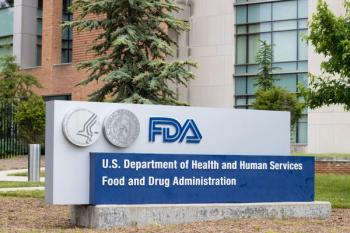
The rising cost of generic drugs
Drug shortages and manufacturer consolidation are leaving their imprint on the price of some generic drugs.
Drug shortages and manufacturer consolidation are leaving their imprint on the price of some generic drugs, which are rising but not to the extent of branded products.
During the past 12 months, half of all retail generic drugs increased in cost, with one out of 11 more than doubling - some as much as 1,000% - according to Adam Fein, Ph.D., president of
The drugs representing the largest jumps, according to Fein’s analysis based on the
Tetracycline faced a shortage when manufacturer Teva Pharmaceuticals said the capsules were unavailable due to a lack of raw materials, while Watson Pharmaceuticals (now Actavis) stopped manufacturing the capsules in October 2013.
The increases in the cost of these drugs, along with others such as antibiotics doxycycline and digoxin used to treat congestive heart failure, prompted U.S. Senator Bernie Sanders (I-Vt.) and U.S. Representative Elijah Cummings (D-Md.) to investigate the causes of the significant hikes in the prices of some generics. They are working with 14 generic drug companies to undercover the source of the problem.
The National Community Pharmacists Association (
On the bright side, generics saved Americans nearly $239 billion last year, an increase of 14% over the previous year, according to the
NEXT: Generic price inflation: Not a new trend
Generic price inflation: Not a new trend
“We are seeing inflation with some generics--not a new trend--but we are paying more attention,” says Sharon Frazee, Ph.D., M.P.H., vice president, research and analytics,
She points to the increase in the price of captopril, which she estimates to be 1,022%. “But the cost of generics is still low compared to brands,” Frazee says. “I believe that generics will demonstrate deflation in general with a few anomalies.”
As a pharmacy benefit manager, Express Scripts plans ahead for shortages and consolidation that might affect the cost of generics in the home delivery marketplace, Frazee says.
“We watch the market carefully on a monthly basis and stockpile certain drugs to ensure that they are accessible and affordable for our customers,” she says. “Adherence is impacted by the out-of-pocket spend.”
Frazee says that without affordable medications, plan sponsors might be forced to limit or eliminate coverage for their employees. “But with so many generics on formulary, we can always replace the ones facing shortages with a drug of equal value,” she says.
NEXT: Two-tiered generic prices
Two-tiered generic drugs
The price of tetracycline rose so significantly that Ryan Cox, director, clinical pharmacy services for
Highmark uses a five-tier formulary, with the first two tiers being preferred and non-preferred generics, followed by third and fourth tiers of preferred and non-preferred brands and a fifth for special pharmacy. “Quality and access are our priorities but with all things being equal, we will consider cost in determining which generics to put on the first tier,” Cox says. “We want to normalize the playing field and encourage consumers to pay less for drugs they really need and more for those they don’t need.”
He says that the copayment differential between the first two tiers is generally big enough to encourage the use of the preferred tier. The differential also allows for a decrease in the amount a plan pays for the non-preferred generic (higher member copay) and thus an opportunity to better control the impact of rising generic prices.
READ: P
Still a good deal
Rick Bruzek, Pharm.D., vice president of pharmacy services,
Bruzek points out that when some brands go off patent, such as antidepressant Cymbalta did in late 2013, they still remain expensive until generic manufacturers enter the market.
NEXT: Future increases
HealthPartners added a second tier for non-preferred generics for its Medicare formularies for 2014 that require prior authorization. Bruzek says that there are only a few drugs on the second tier, such as extended release diabetes agents. HealthPartners plans to roll out two-tiered generics to its self-insured and individual members soon.
“We made this decision before price inflation to block the use of higher priced generics when there are multiple choices available,” he says. He anticipates that if the first tier requires a $5 copayment and the second tier $20, pharmacy costs will decrease.
Bruzek also says that FDA’s stricter requirements and more intense scrutiny of manufacturers could slow down production as producers fix any deficiencies.
“Besides new higher cost generic introductions, price increases on older products are also causing the higher cost of generics,” Bruzek says. “The exact contribution of each differs in time and is dependent on the utilization of the product.”
He foresees that the higher prices will add costs to insurers and plan sponsors, and for consumers--those who pay co-insurance and/or cash--costs will increase for those generic products that might land on a higher tier.
Although Bruzek expects generic prices to continue to increase, he is confident that they will bring value. “Generics have a proven track record in safety and efficacy,” he says.
Mari Edlin is a freelance writer based in Sonoma, Calif.
Newsletter
Get the latest industry news, event updates, and more from Managed healthcare Executive.

















































